Cartier Celebrating the Brand’s 50th anniversary in Japan
The history of the French luxury brand Cartier and their relationship with Japanese art and designs over the years
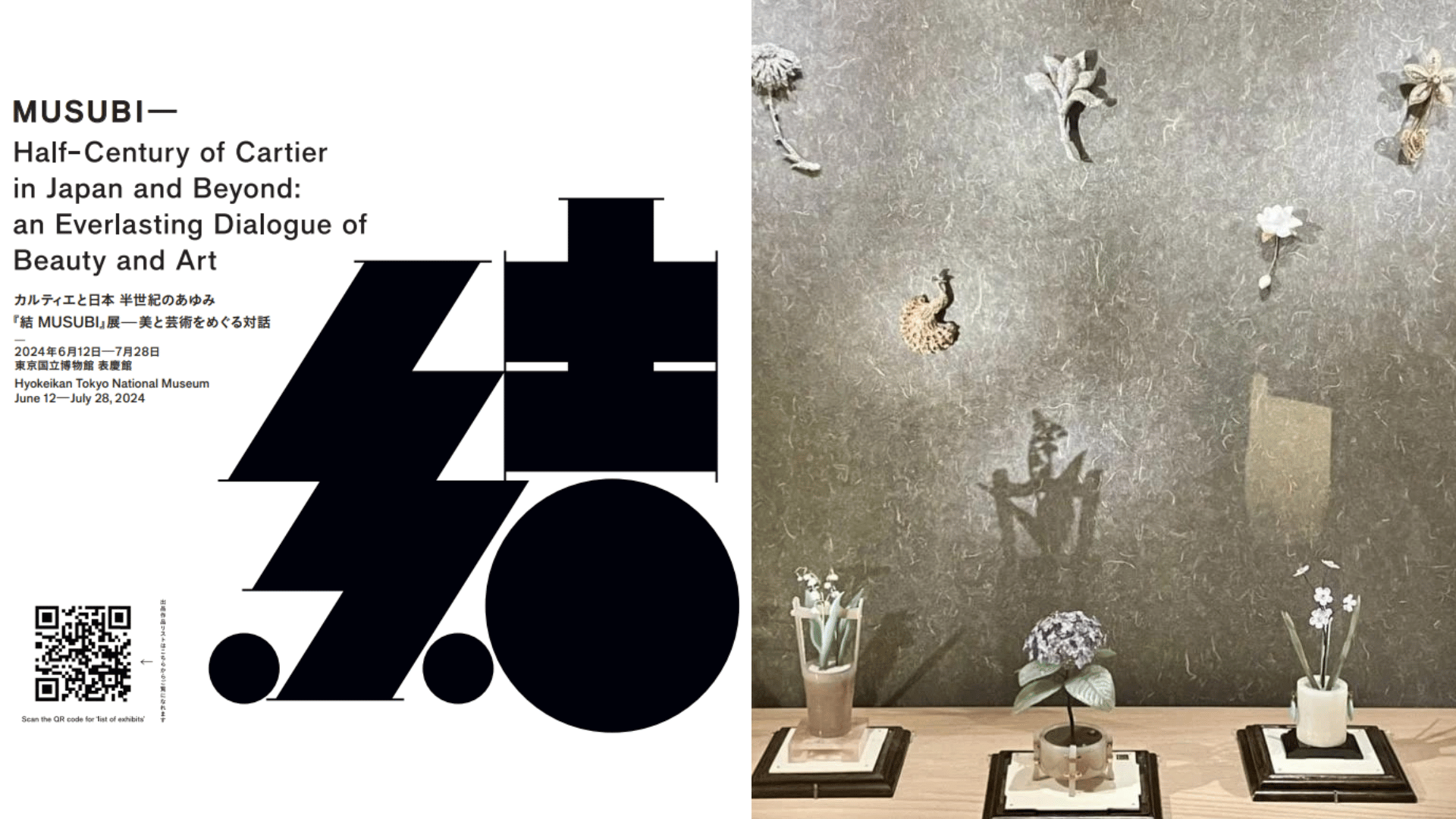
Copyright©2004-2024 Tokyo National Museum.
Celebrating the Brand’s 50th anniversary in Japan, Cartier has hosted an Event, “MUSUBI-Half Century in Japan and Beyond: an Everlasting Dialogue of Beauty and Art” at The Tokyo National Museum. This event showcases the longstanding historical relationship between Cartier and Japan, and with Japanese Artists.
About Cartier
Cartier was founded by Louis-Francois Cartier (1819-1904) in 1847 in Paris. The brand has been known as among the most prestigious Jewellers for decades. Renowned for its iconic collections such as the Tank Watch, Panthère De Cartier collections, Santos Watch, and LOVE collections. The brand has captivated people of all generations worldwide over the years.
Cartier was originally a family-owned and operated business, passed down through generations, and it was Louis-Francois Cartier’s three grandsons, Louis Cartier (1875-1942), Pierre Cartier (1878-1965), Jacques Cartier (1884-1942) who continued the legacy and brought the business to international success.
Each brother held distinctive roles within the business and was responsible for operations in different countries. Louis in Paris, Pierre in New York, and Jacques in London, and it was Louis who played a significant role in the business introducing many of the brand’s most renowned designs and iconic collections. He was also an art lover, an avid art collector, and a member of the Parisian “Society on Friends of Japanese Art”.
At the “MUSUBI-Half Century in Japan and Beyond: an Everlasting Dialogue of Beauty and Art” exhibition, photographs and art books from his collection that were the source of some of the brand’s creations are also exhibited alongside the pieces.
Cartier and Japan
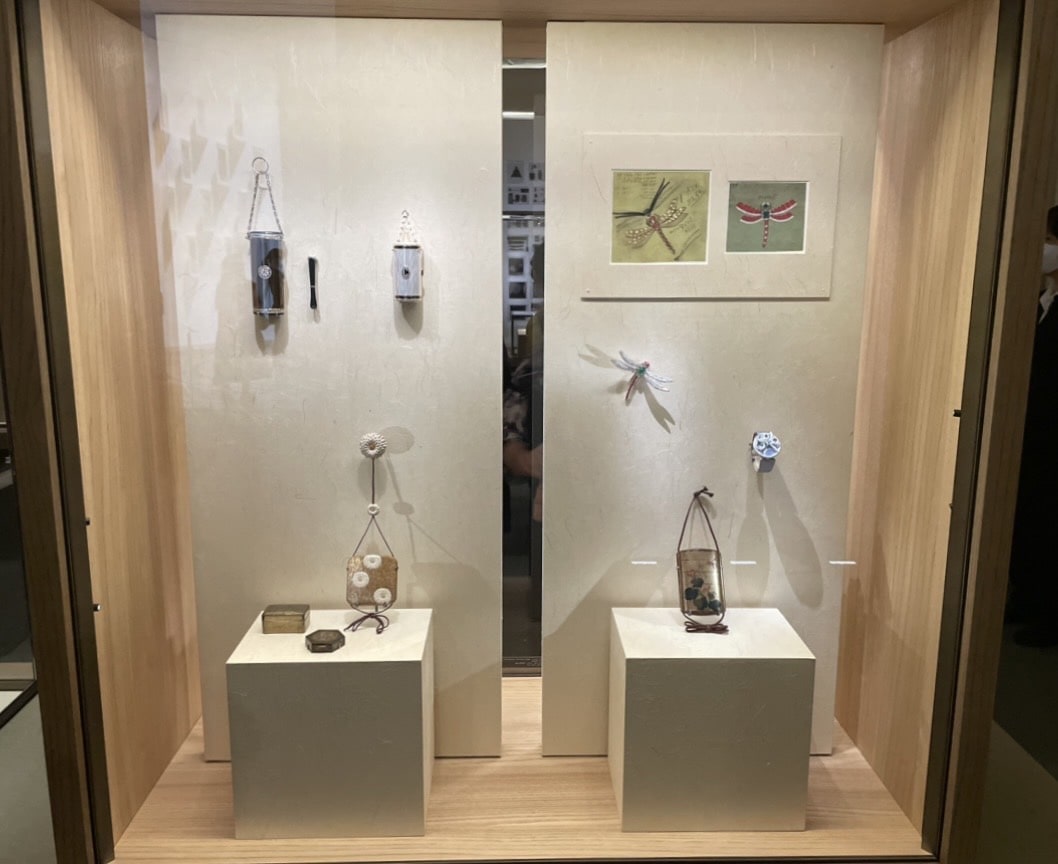
The exhibition started with the colorful panel of Fifty Sky Views of Japan by Sho Shibuya at the entrance lobby which is inspired by Hiroshige Utagawa’s Fifty-three Stages of the Tokaido.
Upon entering the exhibition room, Louis Cartier’s collection related to Japan mainly from the late 19th century was shown. This was when Japanese art and designs significantly impacted European art, especially in France, known as the Japonisme movement.
The first row introduced the collection of old traditional Japanese-style items such as medicine cases, cigarette and vanity cases, and combs, some of the collections go back to the late 1890s. It will make you feel as though you are traveling through time.
Introduction of the Clocks
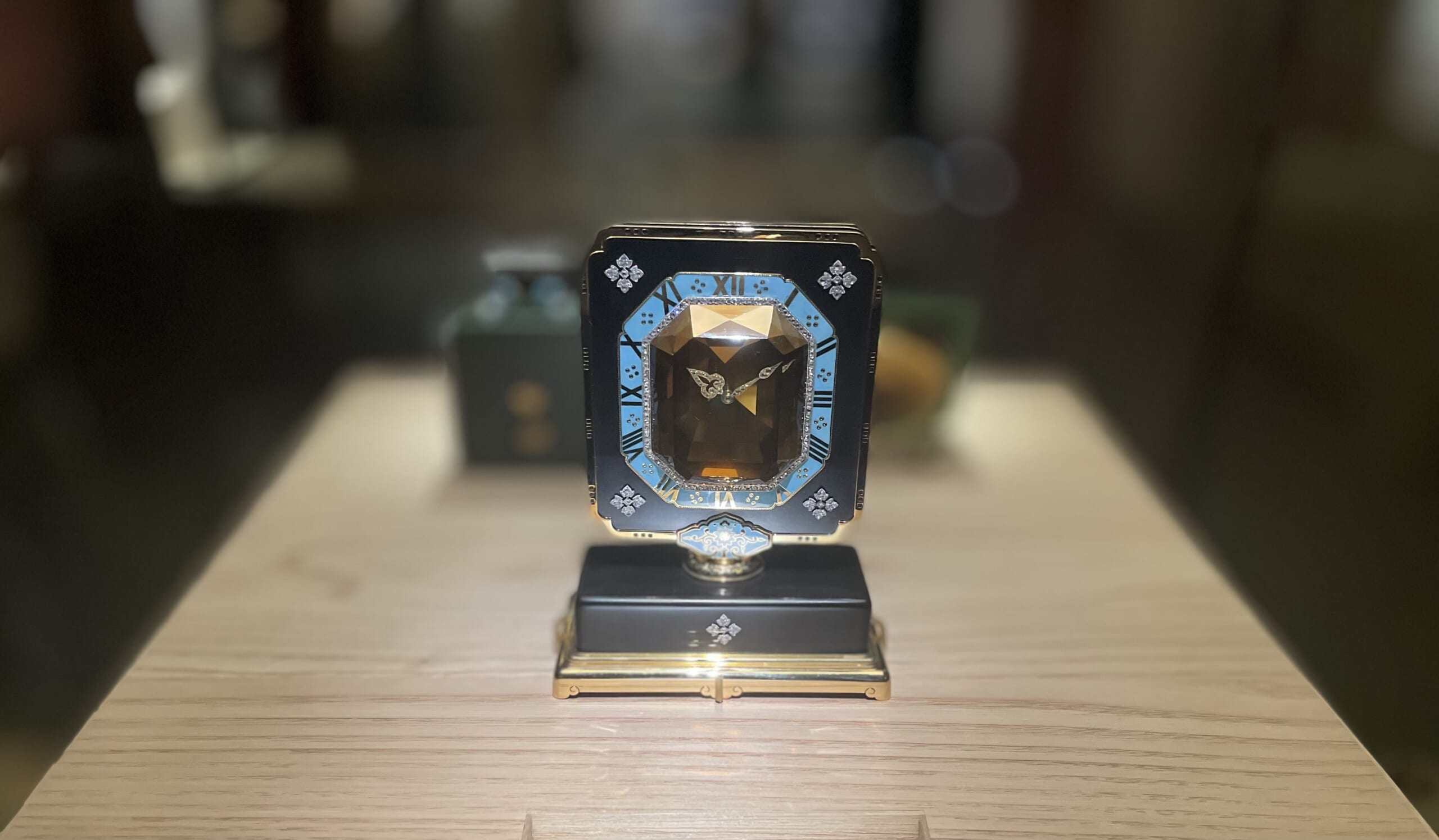
The history of the brand’s watchmaking goes back to when Louis Cartier created the first men’s wristwatch in 1904 when his friend, the pioneering Brazilian aviator Alberto Santos-Dumont, expressed the inconvenience of using a pocket watch while flying. Since then, the brand has continued to innovate in its maison, eventually unveiling the brand’s highly acclaimed Mystery Clock.
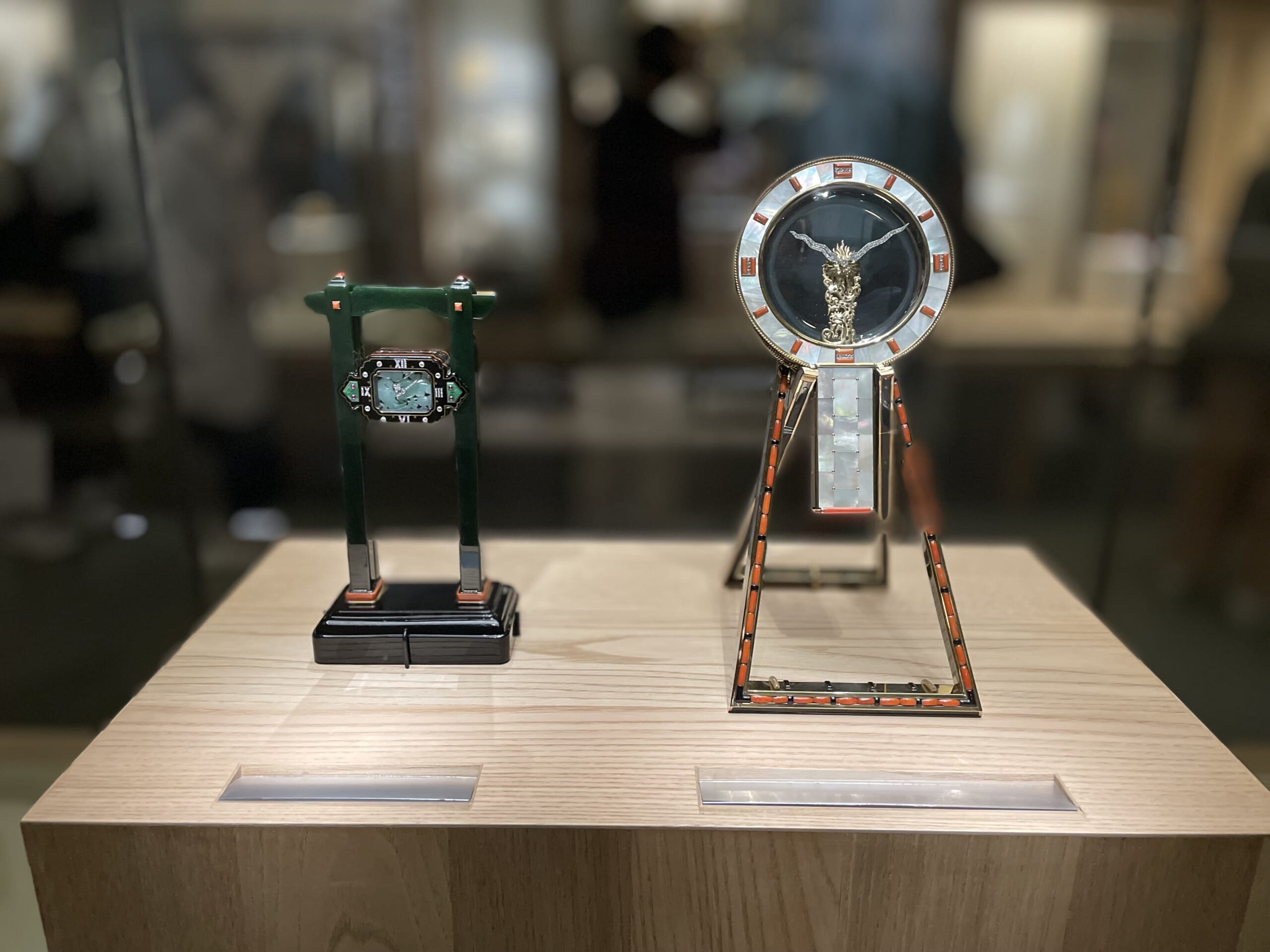
Alongside the Mystery Clock, some clocks symbolized the history of an artistry manufacturer. The Portique gravity clock was another unique timepiece which solely powered by gravity. Normally, an automatic movement watch or clock is typically powered by the motion of the wearer’s wrist or by manually winding the crown, instead, this clock would gain its power by gravity while the case gradually slides down between 2 jade columns over eight days. Once it reaches the bottom, it requires manual repositioning which perhaps operates quite similar to an hourglass.
However, never forget Cartier’s identity as a Jeweller. The Japanese-style clock, reminiscent of a traditional Japanese mirror impresses with its Jeweller’s touch. The clock is adorned with large pieces of delicate Mother of Pearl, elegantly set around the bezel, with exquisite diamonds studded on the hands showcasing the craftsmanship of a Jeweller.
Traditional and Elegancy

While walking through the room, the exhibition showed the significance of how traditional Japanese designs have influenced the brand’s archival Jewellery pieces. Some designs and patterns were reminiscent of traditional Japanese motifs exemplified by a brooch meticulously set in platinum and pavé diamonds. The gorgeous brilliance enhances the overall design.

Various items showcased the brand’s exceptional craftsmanship, and the Apple Tree was no exception, standing out as a prime example of their meticulous attention to detail and artistry. Crafted with such precision and delicacy that looks almost indistinguishable from the real. The blooming flower crafted with meticulous attention to detail down to the final petal, is elegantly enhanced by the milky color of the moonstone, showcasing the artisan’s exceptional classic work.
The Iconic
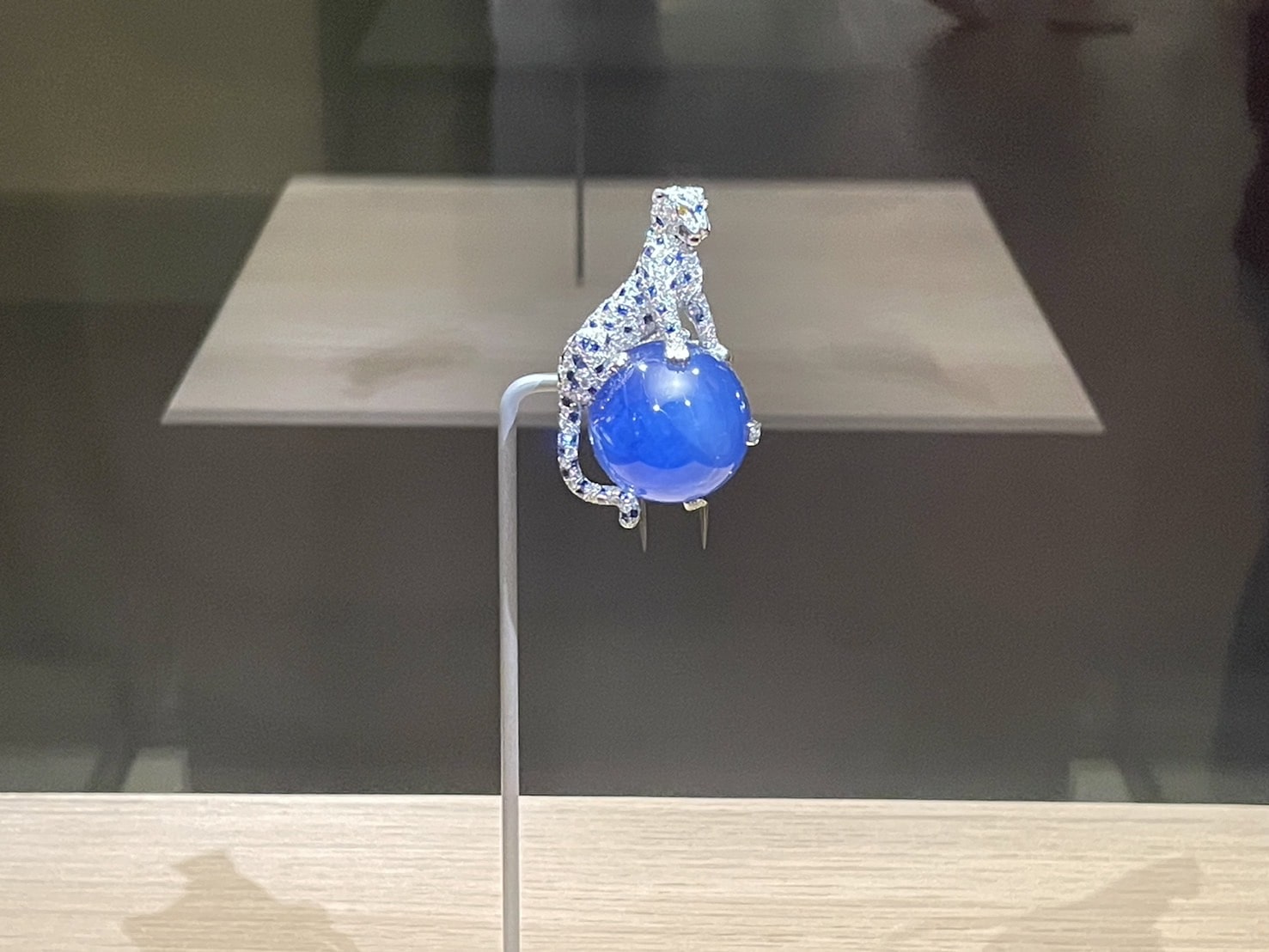
The iconic Panthère introduced as a wristwatch in 1914, has been a symbol of the brand’s identity ever since. This renowned design was inspired by Jeanne Toussaint, who worked closely with Louis Cartier. The Panthère is adorned with exquisite pavé diamonds and black onyx, elegantly showcasing the signature motif of this wild animal. The three-dimensional brooch with one eye as a yellow diamond and the other as a blue sapphire was introduced later in 1949. The untamable wild animal Panthère along with the magnificent sapphire cabochon, symbolizes its unwavering strength and sophistication.

Cartier had a global vision of the world, and the influence is beautifully reflected and expressed throughout their diverse collection. The exhibition introduced archive collections from this era, such as a necklace specially ordered by a Maharaja. While the West was in the Art Deco period, the colorful gemstones carved as Jewellery from India caught their interest. As a result, the brand seamlessly incorporated elements of both East and West and created Tutti Frutti. Luxuriously adorned with multicolored gemstones, mounted by platinum and diamonds is one of the iconic collection from its time.
Over All
Exploring brands with a long history is always fascinating, as they often carry intriguing stories tied to historical contexts. Cartier is no exception, the collection showcased at the exhibition revealed the brand’s deep and rich history and its connection to Japan.
The collection at the exhibition is undoubtedly just a glimpse of their vast archive, I highly recommend checking out their next exhibition when it takes place.
▽Related Articles▽
▼Editor’s Picks▼
Written by
With over 16 years of experience in the luxury brand industry and additional years in the hospitality sector, my childhood spent abroad, living in 3 different countries, and traveling to 35 countries has deeply influenced how I see the world.










